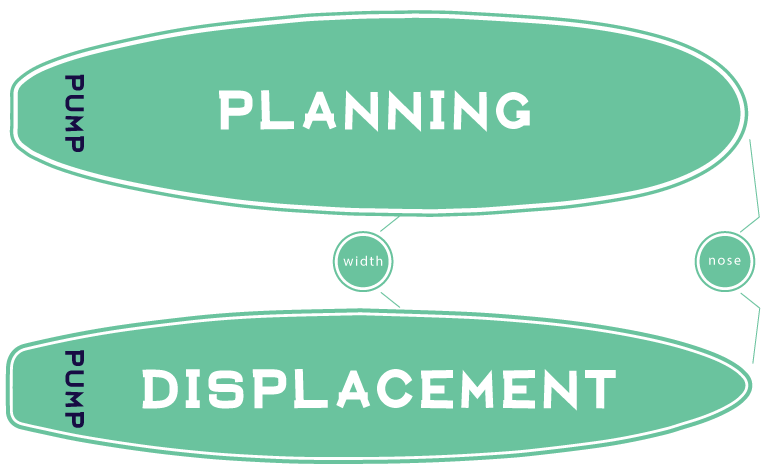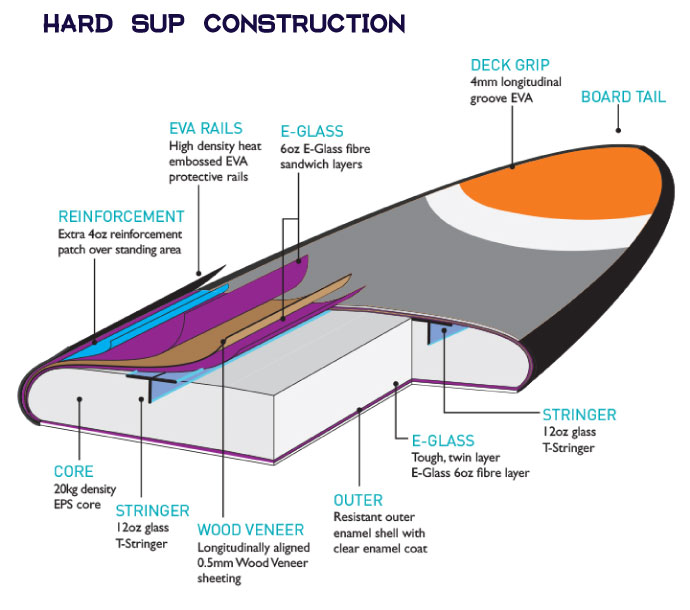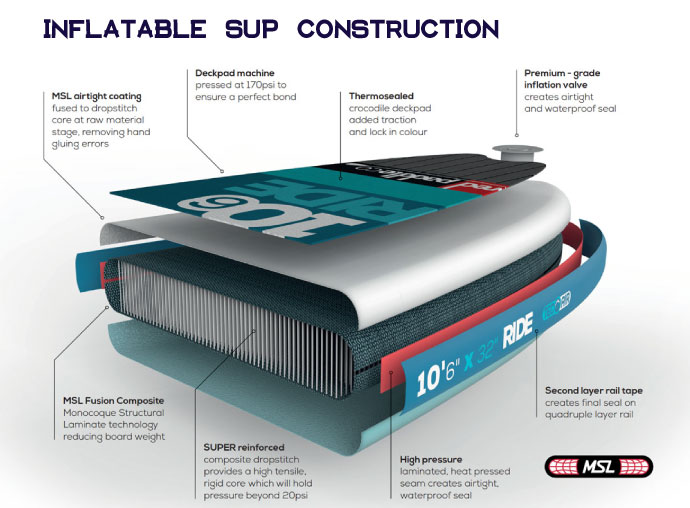Paddle Boarding Beginner Guide
So, you’re thinking about grabbing your first stand up paddle board (SUP) and heading down to the water? Great decision! You are not alone. Over 2.8M Americans SUP’d in 2014. This is a 154% increase from 2010, and with no signs of momentum slowing up, paddle boarding is set to become a regular water sports activity among Americans.
Paddle boarding history
Modern paddle boarding has its roots in the 1930s when Thomas Blake made a reinvention of the historic Hawaiian boards. But it is the recent surge in popularity has allowed the sport to flourish. There are numerous reasons for the burgeoning popularity. Standup Paddle Boarding (or SUPing) allows surfers to ride more waves in a session, ride different breaks, and still have loads of fun even without any waves. The transition from a surfing activity, to one that can be performed on any water body has allowed families all across the country to participate in a sport that:
- provides healthy exercise – 350 calories per hour!
- provides the freedom, tranquillity and bliss of being on the water close to nature
- is a fantastic opportunity to spend more time with friends and family – 59% of people nominated this as one of their main reasons for SUPing
- You can take on holidays with you – inflatable SUP, or regular SUP with car & roof racks
Inflatable vs Hard Paddle Boards
As a beginner, one of the first questions you’ll want to answer is what type of board is right for you. This inevitably involves a discussion around whether a regular solid SUP (ie foam covered in Epoxy or fiberglass), or an inflatable paddle board (iSUP) suits you best. Yes, advanced paddlers will generally have several boards to suit different activities and conditions.
But, assuming you’re like most beginners and only want to outlay cash for one board (for now), we’ve outlined the most important considerations for your first board below.
1. What is the board for?
Sounds obvious I know. But given the numerous different types of boards out there, we can significantly narrow our search by defining our main paddling activity.
Hull types
However, before going into each activity, it will be helpful to have a basic understanding of the two basic SUP hull shapes; planning and displacement.

Planning hull
This is what we recommend for most beginners. It has a rounded nose so it is easy to maneuverer. Extra width provides much needed stability and these boards generally have a slight rocker so it goes over small waves and choppy water with ease. The downside with all this maneuverability and stability is a decrease in speed. But as a newcomer to the sport, chances are you want to get out on the water and have some fun, not compete in SUP races.
Displacement hull
Rather than go over the waves, the sleek pointed design of displacement hulls allows them to cut through waves and chop. Combined with a decrease in width, these boards are able to reach higher speeds, making them perfect for racing or paddling long distances. However, the increase in speed comes at the expense of stability and maneuverability. As a beginner, it is quite tempting to go for maximum speed. But you may quickly find out that you actually need that additional stability in order to enjoy your time on the water – nobody wants to spend more time in the water than on the board!
Keep basic hull shape in mind when checking out boards. There are many hybrid boards too that are designed to bridge provide the benefits of both hull types.
Now, back to choosing the main activity you’ll be using the board for.
Recreation & fitness in flat water & small waves
This covers the majority of SUP riders out there so there is a good chance that you’ll fit into this bracket too. These boards are generally wide and thick to allow for stability, which is particularly important for beginners. The size of your board will depend on your weight, and if the board is likely to be used by other family/friends, you should also take their weight into consideration. Regular SUPs and inflatable SUPs are both great choices for these family friendly, all rounder beginner boards.
Flat lake touring & cruising
Are you more of a river or lake explorer covering miles at a time? Touring models are generally built for speed. They come in various hull shapes and there are are some good hybrids available that might be of interest to some beginners that want the additional speed and are up for the challenge that comes with the decreased stability.
Both regular and inflatable SUPs are good choices for these activities. Regular boards are slightly stiffer than inflatables, so you will get a slight speed advantage (less than 5%) from a regular board. So the decision would come down to whether the transportation and storage benefits of an inflatable board are worth the 5% difference in top end speed.
Hitting the waves
If surfing waves is your main goal, a shorter board with a rocker and appropriate rails should be on your radar. As iSUPs generally have thick rails, it makes it hard to cut into the waves, so we’d generally recommend regular paddle boards if you’ll mainly be using the board for surfing.
But if you are only surfing the occasional wave and will predominantly be using the board in flat water, then an all-rounder board on the shorter side is worth considering. Both inflatable and non-inflatables would be good choices here.
Yoga
SUP yoga classes have begun popping up everywhere. Board manufacturers have followed suit and there are now numerous specialist yoga boards available. These boards offer stability and a wide deck to ensure you can maximize the number of postures available. They also generally come with some bungee cords to attach a water bottle, weights so you don’t float away from the rest of the class, or your paddle so it’s out of the way.
If you plan on using the board mainly for yoga, it makes sense to purchase a specialist yoga board. However, if you’re just planning the occasional yoga session, then any board that is wide and long (for stability) with a full deck grip will still get you striking a solid warrior II pose. Inflatable paddle boards have the added benefit of giving a little, which can reduce discomfort & increase enjoyment – in the same way that a good mat makes regular yoga more enjoyable. More info can be found in our SUP yoga for beginners guide.
White water rafting & rocky river cruising
SUP white water rafting is attracting former kayak and canoe paddlers because of the extra challenge presented by standing. Ie Class II & III rapids offer a very challenging workout on a SUP, yet these same rapids can become rather easy for experienced kayakers.
Inflatables dominate as they are very durable, and much less likely to be damaged by hitting rocks, logs, & shallow water whilst white water rafting or just cruising down rivers where these obstacles are present. If you are mainly white water rafting, there are specialist boards available that are short, wide, maneuverable and have either very small or no fins. Plastic (PE) specialist white water rafting boards are also available.
2. Transportation & storage
This is the biggest difference between a SUP and iSUP, and often is the deciding factor when choosing the board type. As regular SUPs are bulky and heavy, you’ll need to have a way of transporting them to and from the water. Roof racks and trucks are commonly used. Their bulk can also make them awkward when lifting them on and off the roof racks. You’ll also need somewhere to store these boards at home. I personally like these paddleboard racks.
iSUPS roll up to size of a sleeping bag and can be easily transported to the water, your favorite holiday spot or even overseas with you. This versatility has made them very popular over the past few years. You will need to inflate and deflate each time (5-10 minutes), so it is worthwhile ensuring the pump supplied with the board is good quality so you can easily obtain the last couple PSI’s and reach optimum stiffness. If this is too hard, you can always opt for an electric or foot pump.
3. Construction material
Clearly, SUPs and iSUPs are made out of very different materials. The two images below show cross sections of each type of board.


The hard SUP is from Ocean and Earth and features a soft deck which is handy for beginners. The iSUP is from Red Paddle Co and features MSL to reduce weight. Note the difference in the cores. The hard board uses a solid EPS core, whilst the iSUP uses a high tensile dropstitch composite that provides rigidity when inflated. The technology in iSUPs have come a long way over the past few years, and I think this picture does a good job of demonstrating the advancement in materials.
There are numerous different types of construction materials and techniques used by the various manufacturers. Unless you’ve a pre-disposition to any particular type of material, it is doubtful that construction material alone is going to heavily influence your decision to reach for a SUP or iSUP.
Want more iSUP info? Be sure to check out our ultimate inflatable paddle board beginners guide.




